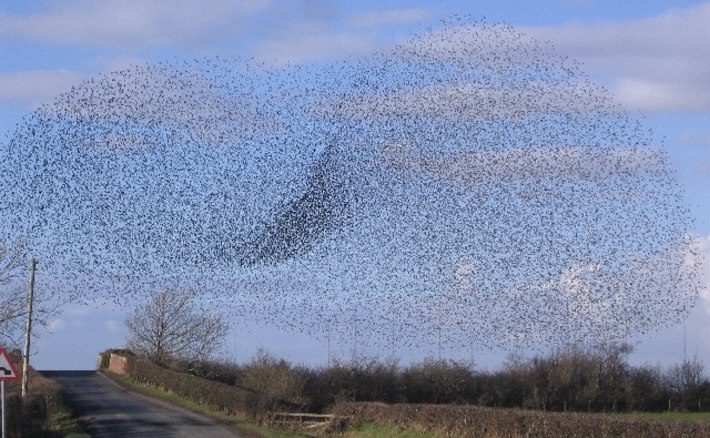
The State of the Union (SOTU) address is an annual event. On the night of the event, both houses of the US Congress, President and Cabinet, military leaders, members of the Diplomatic Corps and their invited guests gather in the House Chamber for the President’s assessment of the country’s status and direction. The Wilson Administration began the tradition of an in-
It’s now 2026 and time for the SOTU address. Inside the Chamber, all are seated, and the President has begun his speech. Attendees are preparing themselves for a long speech frequently interrupted by applause.
Unbeknownst to those in the Chamber, a swarm of small bots has been lurking up on the ceiling, for months now, ever since the room was freshly painted. Collapsed, dormant, almost entirely unnoticeable, and resembling decorative ceiling fixtures, they’re painted with the same colors and shades as what’s immediately around them.
All at once, these bots awaken quietly, slowly unfold themselves, detach from the ceiling surface and begin to move. Gradually, they’re in position to take off. They can either fly, climb, crawl or walk stealthily, and use their sensors and built-in intelligence to navigate and keep from running into one another when swarming.
The bots start hovering overhead, but the audience haven’t spotted the bots yet; the people in the room are still focused on what’s going on at floor level. The bots are methodically scanning the floor. Soon they’ve identified their targets and will use facial recognition to do more precise targeting.
Once they’re done scanning, the bots strike. They zoom quickly up to their targets, Many open fire, one shot at a time.
Chaos erupts on the floor of the Chamber. But the bots continue to methodically hunt down and kill their targets.
The intention of such an elaborate plot of placing and mobilizing bots in the Chamber has been to assassinate particular members of Congress, who are conveniently, once every year, all in the same place at the same time.
Implications for information technology and the data community
Been thinking about the events of this past week, which led me to ponder how many lethal weapons are already in private hands, and how weaponry is becoming more mobile, lightweight, efficient, and lethal. What are the implications for data science?
Some of the observations I would make about this topic:
- The trend toward more and more weapons lethality and ubiquity has been evident since the invention of gunpowder. But technological innovation has more recently taking an exponential growth path, particularly since World War I. Often improvements impact new weaponry in multiple ways at once.
- What are the implications in the 21st century? More and more power ends up in the hands of individuals, including in the hands of the misguided, emotionally distraught and untrained.
- This trend also applies to information technologies and other techs that can be empowering in more indirect ways than physical weapons. Think for a moment about the public cloud and all the tooling a given software or data professional has at their disposal. Consider also the vulnerabilities of public cloud services and how those could become the means for the unauthorized to hijack services, disrupt communications, or disable countermeasures.
- At the core of today’s information technology empowerment is data, as evidenced in the data economy and the rising ability to monetize that data.
- Now think about the coming together of advanced robotics, autonomy, mobility between air, sea and land, and miniaturization.
- On the aerial robotics front, we’re facing the prospect of swarms of bots accomplishing a number of purposes like the one described above, malicious or .
- Larger vehicles could transport these swarms and provide portable recharging. Those larger vehicles could autonomously charge themselves at public charging stations.
- This is power projection on a large scale that could potentially be overseen by one person.
- Now think about the countermeasures we’d have to develop given the threat. All these swarms would have only small, often entirely undetectable electronic emissions footprints, and they’d be managed through encrypted networks even if only intermittently to avoid detection.
- Smart city infrastructure would be providing the connectivity and the surveillance capability.
- Society would have to choose a high level of surveillance given the nature of the threat.
- Individuals would have to learn to tolerate this high level of surveillance wherever they live and work.
- Law enforcement would have to be collaborative across jurisdictions to an extent that’s hard to imagine today.
- For that level of data sharing, law enforcement agencies would require more radical desiloing, at least the equivalent of a knowledge graph foundation and a core of data intelligence.
- Societies at large, particularly in densely populated areas, couldn’t risk operating in a siloed fashion.
The more capable technology becomes, the more threats emerge and the more we’ll have to counter new threats. Which implies we’ll have to do more to anticipate, detect and counter the use of newer, more powerful lethal weapons that can act autonomously on behalf of those who seek to do harm.
Which means there’s even more urgency to transform data infrastructure, as well as how data is managed.
